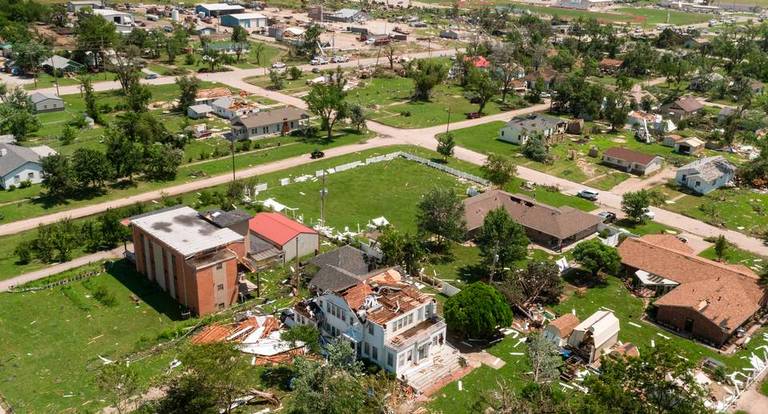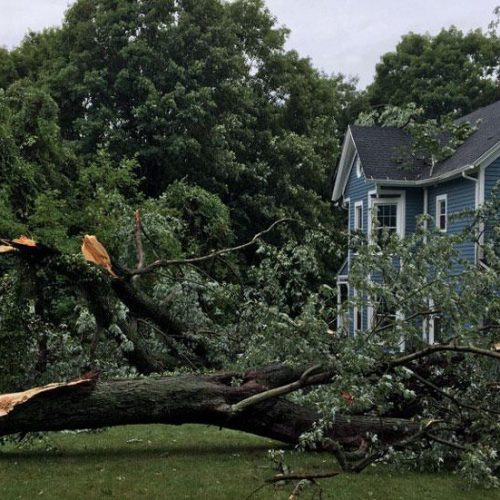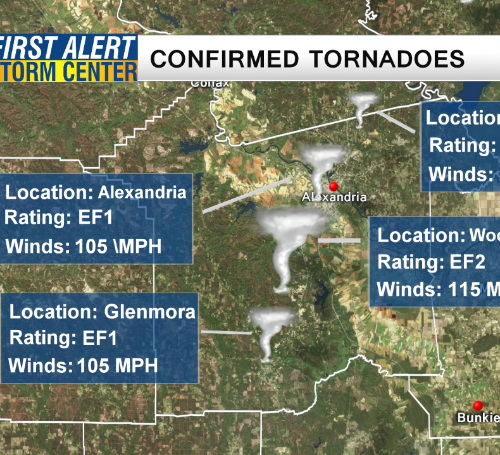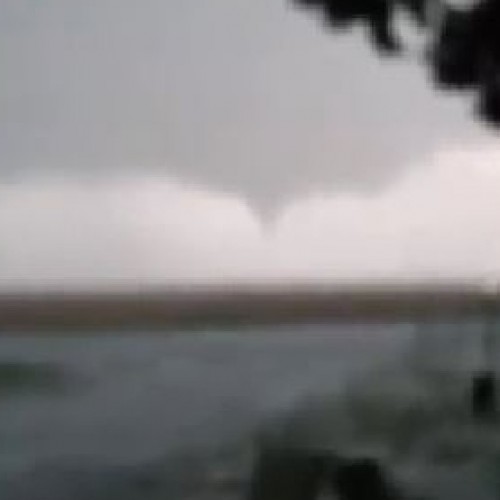The tornado that tore through Eureka late last month came from a storm that intensified so rapidly no warning was issued, officials say.
“It spun up so fast that we didn’t have quite enough time to get the tornado warning out in time,” said Andy Kleinsasser, a meteorologist with the National Weather Service in Wichita.
The EF-3 tornado touched down in the southwest corner of Eureka at 7:18 p.m. on June 26 and moved northeast through the center of town. Weather officials on Friday said new evidence suggests there may have been a brief twin tornado that caused damage in southwest Eureka.
Eight people were injured, including one critically. All of those hospitalized have since been released.
Weather officials don’t know how a thunderstorm with no real venom suddenly produced a violent tornado with peak winds of 152 miles an hour.
“We’re still trying to figure that out,” Kleinsasser said. “It didn’t look like anything on radar.”
Researchers are looking into whether a collapsing second storm west of Eureka gave the tame storm a turbo boost of sorts, allowing it to suddenly produce a tornado 500 yards wide that was on the ground for more than eight miles.
Tornadoes that hit without a warning being issued are uncommon, but they do happen. Of the 130 tornadoes reported in 26 counties in southeast Kansas since 2012, 23 — or nearly 18 percent — had no warning or zero lead time, weather service records show.
Though no tornado warning was issued for Eureka, sirens were sounded in town just before the tornado struck because someone called 911 and reported seeing funnels just west of the city. That was enough to convince Greenwood County Emergency Management director Levi Vinson to activate the outdoor warning system.
It was the second time in two years that Eureka has been hit by a tornado. In 2016, residents had more than a half-hour of warning before a tornado hit.
“In this case … I think the lack of warning helped us,” Vinson said. “You didn’t have time to think. The only thing you had time to do was run to the basement or closet.”
One of the town’s sirens didn’t go off because it is an old civil defense siren from the 1950s that has to be activated manually, Vinson said — and no one had time to get to the volunteer fire station where the siren is located. But other sirens overlap that siren’s coverage area, he said.
There was no complacency when the sirens sounded, Vinson said.
Even the one person critically injured had looked outside, seen the debris and turned to warn his wife to take shelter when the door blew into the house and the roof and a wall came down on him, Vinson said.
“The people are leery” of tornadoes thanks to the 2016 tornado, he said. “They can still see the signs from that tornado” around town.
Those injured in the June tornado have either returned home or found a place to stay while rebuilding, Vinson said.
“It could have been a lot worse,” he said. “This tornado was larger and more powerful” than the one that hit Eureka two years ago.
Given the circumstances, “it defies explanation” that no one was killed, he said.
For only the second time since detailed records began being kept in 1950, there were no tornado fatalities in the U.S. during May and June, historically the most active tornado months of the year.
Weather officials say part of the reason is that it has been such a quiet year for tornadoes. Only 571 tornadoes had been reported across the country as of June 27, according to the National Oceanic and Atmospheric Administration’s Storm Prediction Center. That’s barely more than half the 10-year average of 1,004 for the same period.
But improved accuracy of watches and warnings as well as better technology are also significant factors, NOAA spokesman Chris Vaccaro told USA Today.
Vinson credits “the grace of God” that no one died in Eureka last month.
Kleinsasser praised Vinson for acting quickly.
“Hats off to the emergency management there … for taking action and firing those sirens off,” he said. “They did a fantastic job.”
The outpouring of support from around the Midwest has been so great since the tornado struck that officials now advise those wanting to help to donate money to relief funds that have been established.
One, the Growing Greenwood Fund, is meant to provide support for those affected by natural disasters in the county.
The Eureka Foundation is supporting local efforts to recover from last month’s tornado.
“The outflowing of support has been incredible,” Vinson said.
by Stan Finger (2018, July 6/Updated 2018, July 7) The Wichita Eagle





